Before this evening’s dive, one of our number was whisked off the boat as a precaution to the local decompression chamber for a minimum of 10 hours because she was complaining of tingling in the hands and wrists and a general mid chest ache, all of which are possible symptoms of mild decompression sickness.
We are all now deep into repetitive diving (one day we had five dives), surface intervals are often tight, dive profiles are sometimes not ideal and ensuring that dives become progressively shallower during the day is not always possible. She had dived to 34 metres (on air) along with the rest of us (most of whom were on Nitrox) on the first 6am dive of the morning and it probably turned into a deco dive (your computer insists on a compulsory stop at about 20 metres) for her as it did for me. She then sat out the next dive not feeling well, had been put on 100% oxygen and failed to improve. At $1000 per hour for use of the chamber, the benefits of having travel insurance which includes diving is obvious. No insurance or no money means no treatment and we are told that you would not want to go to the public hospital here if you were ill.
This night dive was along a house reef wall – descend to around 10 to 15 m on the north of the wall and drift with the current. There were not many fish about but an enormous amount of active micro life, coral growth which comes out at night as well as some “any time” fish.
At night there are usually different type of anemones out
and hence the reef colour can be very different.
This Regal Feather Star catches food in its fronds which are then passed down to its “mouth” in the centre.
Frequently you find shrimps living in the fronds (there is one at about 1130 in this photo, close to the middle)
Some reef life is averse to light and starts to close up (here a Robust Feather Star is rolling up) when a light shines on them because they think it is now daylight - they soon unroll when the light moves away.
A common and rather beautiful Black Feather Star
Sea stars are common
This sea cucumber was the colour shown – a reddish pink and must be one which comes out at night only since I have not seen it during a day dive.
This more common type of Sea Cucumber seems to be resting upon the top of a Terrace Coral block which close
up has an interesting structure.
This Ornate Ghost Pipe Fish is about 5 cms long and apparently is quite rare in this area
Morays (here a Honeycomb) are quite common at night and represent little threat provided you keep your fingers away from them.
This is thought to be a Hermit Crab – none of us were too sure.
A good night dive of about an hour with no difficult currents.
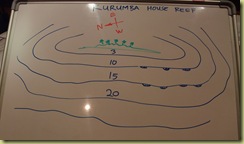
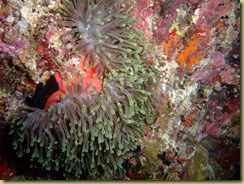
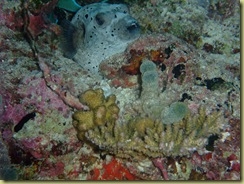

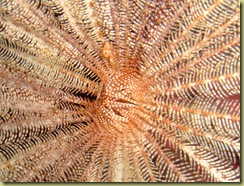
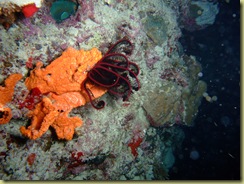
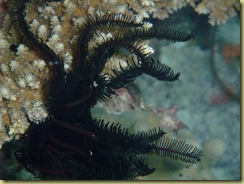
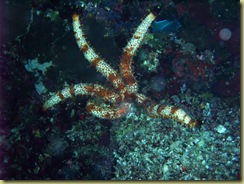
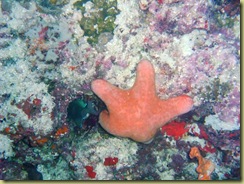
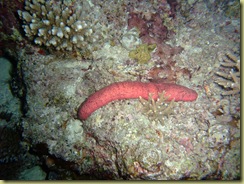
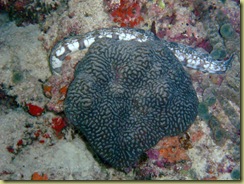
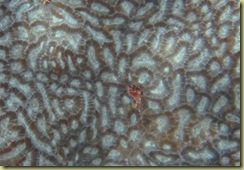
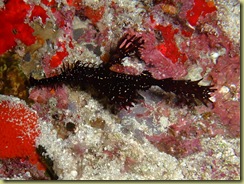

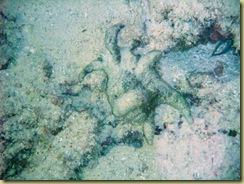
No comments:
Post a Comment